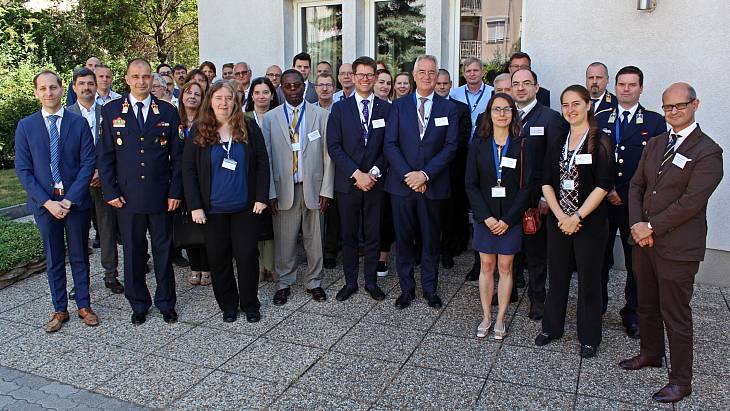IAEA praises Hungary’s progress in emergency preparedness

The five day follow-up mission was led by Chris Dijkens, a former director of international enforcement cooperation at the Ministry of Infrastructure and the Environment in the Netherlands, and included seven experts from countries such as Canada, France, Germany and Portugal as well as two from the IAEA.
Dijkens said: "Hungary has addressed the recommendations from the initial EPREV mission and taken significant steps to improve its preparedness for nuclear and radiological emergencies. For example, the country has developed both an annual and a long-term training programme for various emergency workers and it has also published a protection strategy for such emergencies. This follow-up mission will help Hungary to further enhance emergency arrangements and capabilities."
Carlos Torres Vidal, director of the IAEA’s Incident and Emergency Centre, said: "After the first EPREV mission conducted in 2016, one practical example of implementation of the international legal EPR framework was shown when Hungary hosted the 2017 ConvEx-3 full scale nuclear emergency response exercise. This follow-up mission demonstrated substantial progress in the practical integration of the IAEA’s safety standards in the Hungarian emergency preparedness and response framework."
The EPREV team commended Hungary’s "strong commitment to nuclear and radiological emergency preparedness, reflected in the efforts to improve the country’s emergency arrangements" as well as its "comprehensive annual training and exercise plan for the Hungarian Nuclear Emergency Response System" and the "enhanced requirements to ensure operators are well-prepared to mitigate consequences under their responsibility in case of an emergency at their site".
The review team met with officials from the Hungarian Atomic Energy Authority and visited the Ministry of Interior's national directorate-general for disaster management and a facility that uses irradiation to sterilise food products and packages. They also visited two emergency operations centres.
The IAEA team also made recommendations, including to:
-
Finalise the analysis of the National Nuclear Emergency Response Plan and the assessment of its adherence to IAEA safety standards.
-
Enhance coordination at the national level, to ensure first responders are equipped with detectors to identify radiological conditions they may face during their duty, enabling them to respond effectively.
-
Ensure increased awareness among general medical practitioners to recognise symptoms of acute radiation exposure.
Andrea Beatrix Kádár, Hungarian Atomic Energy Authority president, said: "The EPREV mission in 2016 paved the way for the creation of an action plan to strengthen Hungary’s emergency preparedness and response system. The follow-up mission highlighted our efforts in its implementation and reinforced commitment in further developments."
Hungary generates about half its electricity from four reactors at the Paks nuclear power plant, it also operates two research reactors, an isotope production facility, a national radioactive waste repository, and uses high activity radiation sources in industrial, medical and research applications.










_88592.jpg)

